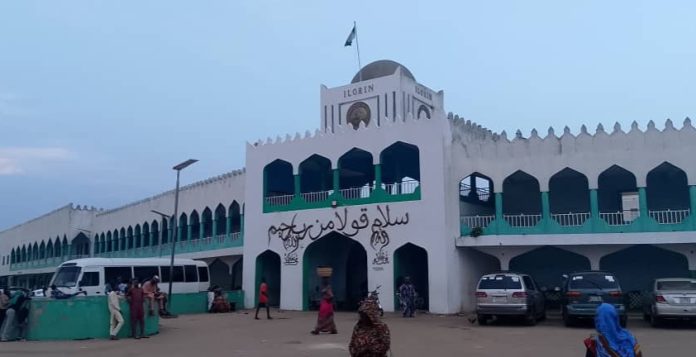No fewer than 100 members of the Nigeria Association of Tour Operators (NATOP) on Wednesday visited the palace of the Emir of Ilorin, Alhaji Ibrahim Sulu-Gambari, as part of activities for the association’s eight Annual General Meeting (AGM).
The News Agency of Nigeria (NAN) reports that the palace accommodates significant historical artefacts with history of the ancient town.
NAN also reports that the AGM with theme:“Tourism as Catalyst for Progress, Peace and Partnership”, holds from July 17 to July 20, in Ilorin.
The designated tour guide for the palace, Mohammed Salman, relayed how the ancient town derived its name.
He said the ancient city of Ilorin derived its name from an iconic historical site called “Okuta ilo irin”, meaning stone used for sharpening metals, located at Idi-Ape quarters.
He said this was the stone “Ojo Isekuse”, one of the founders of the city, used to sharpen his metal tools then.
According to him, before now, the stone was an object of worship and sacrificial offerings but now converted to a tourist attraction.
“Also, the four pillars in front of the palace speaks more about the history of the city, it is synonymous with the people of Ilorin, they stand as a sign of conquest by the town.
“One of the emirs who reigned in Ilorin long ago fought and won four wars against the traditional worshippers.
“After each of the wars, the emir would put up a pillar to indicate that he conquered those he fought,” he said.
According to Salman, within the palace premises is the royal lodge, with capacity to host eleven emirs at a time, furnished with facilities to observe their prayers and carry out every activity of their choice.
He said the palace was also known to house smaller palaces meant for other emirs from the northern part of the country because of the cordial relationship among them.
“The palace mosque here is older than this palace, it was built since 1351 and currently, it is used to crown the emirs in the city, as well as traditional chiefs. The palace was reconstructed by the fifth Emir of Ilorin.
“Ilorin is home to everyone, it belongs to nobody. The people are liberal, accommodating and peaceful, in spite of their religous differences. It is a place to be for tourists.
“We have the warlords’ office here, they are assigned to control different parts of the town and they serve as local intermediary between the emir and the people.
“There are three gates within this palace, the first gate was named after the father of the first Emir, Shehu Alimi; the second gate was named after the first emir, Sheik Abdulsalam Alimi, while the third gate was named after the second Emir, Shita dan Salih Alimi.
“The place where Alimi performed ablutions is still preserved for historical record and religious significance,” he said.
Salman spoke about how important announcements were made from the Emir’s palace with the use of the ancient “Tambari” drum.
He said that the drum which is as old as the ancient city of Ilorin, was brought from Sokoto and used for praise singing of important personalities.
“We also use the tambari with the Kakaki trumpet and bembe drums to announce the birth of any heir apparent that is newly born.
“The wooden part of the drum still remains the same, we have only changed the leather on it when it was worn-out.
“The drums and trumpet are usually sounded every Thursday night and Friday morning.
“They are also played at the sight of the fasting crescent to announce the beginning and end of Ramadan respectively.
“They also announce the celebration of big Sallah and the arrival of a ruling emir’s new baby boy and other such occasions,” he said.
The tour operators were taken to the Sultans’ lodge, horse stable, palace arabic school and other iconic places within the emir’s palace.




